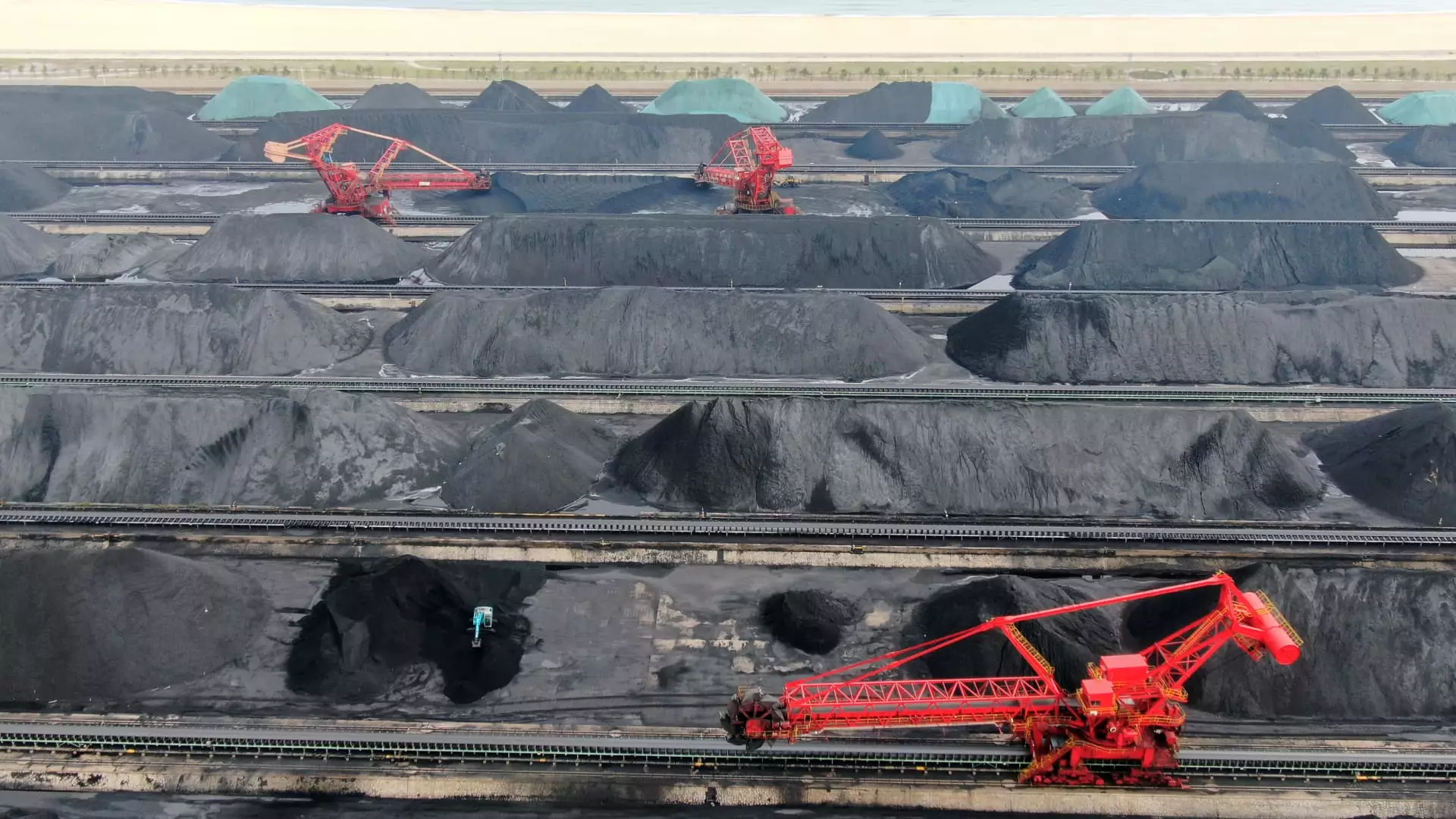China’s industrial sector has experienced a concerning downward trajectory for the fourth consecutive month, as November data reveals a 7.3% decrease in profits when compared to the same period the previous year. This sustained decline raises questions about the effectiveness of Beijing’s economic stimulus measures, which have thus far failed to significantly reverse the downward trend in corporate earnings. While a reduction in the rate of decline—from a staggering 27.1% in September to a lesser 10% in October—presents a potentially hopeful sign, the overall picture remains one of economic struggle and cautious outlook.
Suan Teck Kin, UOB’s head of research, characterizes the current situation as expected, attributing the persistently low profits to a broader disinflationary climate in China. Despite this grim assessment, there are inklings of optimism, as Kin suggests that the economic downturn may have hit its nadir, paving the way for a gradual recovery. This sentiment signals a pivotal moment for China’s economy, where policymakers and analysts alike are on the lookout for indicators that may validate or refute this cautious optimism.
Industrial profits are not just numbers; they are crucial indicators of the health of China’s foundational economic sectors, including manufacturing, utilities, and mining. These profits provide insights into corporate financial health post the government’s stimulation strategies aimed at rejuvenating the economy. Between the months of January and November, China has reported an overall reduction of 4.7% in industrial profits compared to the previous year, a minor shift from the earlier 4.3% decrease observed through October.
Notably, the performance of foreign-invested firms—including those with ties to Hong Kong, Macao, and Taiwan—exhibited only a minor decline of 0.8% during the same period. This modest drop might highlight some resilience among international investments amid the turbulent economic landscape. Yet, the mining sector is a different narrative, marked by a significant eleven-month slump of 13.2%, while manufacturing continues to face challenges with a 4.6% decline.
On the contrary, the utilities sector reported a surprising 10.9% increase within the same period. This anomaly might signal an evolving energy landscape or increased demand for essential services during economic uncertainty. Yu Weining, a statistician with the National Bureau of Statistics, expressed optimism about manufacturing output, suggesting that the consistent implementation of policy measures is fostering a gradual recovery.
Despite the optimistic hints from specific industries, a broader analysis reveals that the Chinese economy grapples with profound challenges. The persistent issues of weak consumer demand and an enduring slump in the property market contribute to a disinflationary environment. Compounding these difficulties, consumer inflation has dipped to a five-month low, and key retail sales figures have failed to meet projections, highlighting ongoing consumer hesitancy and economic fragility.
That said, there are emerging signs of recovery that warrant attention. Manufacturing activity has seen consecutive expansions over two months, culminating in a five-month high in November—a noteworthy development in a generally turbulent economic atmosphere. As policymakers convened to address these pressing issues, there has been a renewed commitment to monetary easing, including potential interest rate reductions aimed at bolstering the lagging economy.
Recent projections from the World Bank for China’s economic growth present a somewhat revised outlook. The institution has raised its growth estimate for 2024 to 4.9%, a slight uptick from earlier forecasts. Furthermore, 2025 is projected for a 4.5% increase, better than previous figures. Yet, the analysts caution against complacency. The long-standing issues within China’s beleaguered property sector, coupled with a prevailing lack of confidence among households and businesses, continue to loom as significant challenges that could threaten growth momentum.
While signs of recovery in certain economic segments provide a glimmer of hope, China’s overarching economic situation demands vigilant observation. The delicate balance between stimulation and enduring economic issues must be navigated carefully as the nation seeks a path forward from its current struggles.


Leave a Reply